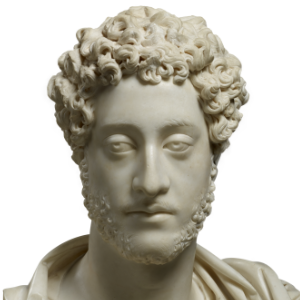
Commodus
Caesar Marcus Aurelius Commodus Antoninus Augustus
Roman emperor, son of the emperor and Stoic philosopher Marcus Aurelius.
Biography
of Commodus
- Commodus was a syndexios (probably a Pater) of the Mitreo Fagan.
- Active c. 161 – 192.
TNMP 145
Commodus was admitted among their adepts and participated in their secret ceremonies, and the discovery of numerous votive inscriptions, either for the welfare of this prince or bearing the date of his reign, gives us some inkling of the impetus which this imperial conversion imparted to the Mithraic propaganda. After the last of the Antonines had thus broken with the ancient prejudice, the protection of his successors appears to have been definitively assured to the new religion.
—Franz Cumont (1902) Mithra and the imperial power of Rome
Commodus was born on 31 August 161 in Lanuvium, near Rome. He was co-emperor with his father Marcus Aurelius from 176 until the latter’s death in 180, and alone until 192.
He accompanied his father in the Marcomannic Wars in 172, and on a tour of the eastern provinces in 176. He became the youngest consul in Roman history in 177, with only 15 years old.
During his solitary reign, from 180, the Roman Empire benefited from a reduction in military conflicts compared to the reign of Marcus Aurelius. Intrigues and conspiracies abounded, leading Commodus to adopt an increasingly dictatorial style of leadership, culminating in the creation of a divine cult of personality, with its gladiatorial spectacle in the Colosseum.
Throughout his reign, Commodus entrusted the management of affairs to his palace chamberlain and the praetorian prefects Saoterus, Perennis and Cleander.
The assassination of Commodus in 192, by a wrestler in the bath, marked the end of the Nerva-Antonine dynasty.
Lampridius, in Historia Augusta, implies that Commodus may have been initiated into the mysteries of Mithras with the following statement:
Sacra Mithriaca homicidio vero polluit, cum illic aliquid ad speciem timoris vel dici vel fingi soleat.
He profaned the rites of Mithras with an actual murder, although the usual thing was simply to say or feign something that would produce an impression of terror.
—Andreu Abuín (2023) The New Mithraeum
This man [Commodus] was not naturally wicked but, on the contrary, as guileless as any man that ever lived. His great simplicity, however, together with his cowardice, made him the slave of his companions, and it was through them that he at first, out of ignorance, missed the better life and then was led on into lustful and cruel habits, which soon became second nature.
—Cassius Dio (229) Historia Romana, LXXIII, 1
Commode est le premier qui – si l’on en croit l’Histoire Auguste (Comm. 9, 6) – ait reçu les sacrements de la secte, mais à titre privé : aucune monnaie, aucun monument officiel n’a consacré publiquement ce que F. Cumont a présenté non sans abus de langage comme une « conversion impériale ». Il est notable pourtant que d’après une inscription transcrite par C. L. Visconti, Commode ait concédé à des mithriastes un local souterrain de la résidence impériale à Ostie (cryptam Patati concessam) pour y célébrer leurs offices (CIL XIV 66).
—Turcan (1999) Mithra et le Mithriacisme
References
- Regio I - Mitreo Fagan - Ostia-Antica.org
- Alain Blomart (1995) Frugifer : Une divinité mithraique léontocéphale décrite par Arnobe
- Arnobius (310) Adversus nationes (Against the Pagans)
- Bricault, Veymers, Amoroso et al. (2021) The Mystery of Mithras. Exploring the heart of a Roman cult
- Cassius Dio (229) Historia Romana
- Epigraphik-Datenbank Clauss / Slaby. Altar to Mithras at the Walters Art Museum in EDCS
- Epigraphik-Datenbank Clauss / Slaby. Aion relief of Mitreo Fagan in EDCS
- Roger Beck (1998) The meeting of the Virunum Mithraists on June 26, A.D. 184
- The Walters Art Museum (2022) Votive Altar to Mithras
Mentions
Aion of Mitreo Fagan
TNMM 116
The marble Aion from the lost Mithraeum Fagan, Ostia, now presides the entrance to the Vatican Library.
Aion relief of Mitreo Fagan
TNMM 440
This white marble relief depicting a lion-headed figure from Ostia is now exposed at the Musei Vaticani.
Altar to Mithras at the Walters Art Museum
TNMM 542
This altar bears an inscription to the health of the emperor Commodus by a certain Marcus Aurelius, his father and two other fellows.
Mitreo Fagan
TNMM 98
The Mitreo Fagan revealed remarkable sculptures of leon-headed figures now exposed at the Vatican Museum.
Plaque with the list of worshippers of Virunum
TNMM 375
The bronze bears the dedication of a restoration of a Mithraeum carried out in 183.
et Aeliano coln/s(ulibus) VI k(alendas) lulias.
[There follows, in four columns, a list of 98 names, all masculine, with the first 34 in the same hand.]
Tiberius Claudius Quintilianus ob dedicationem templi tabulam / aeream donum dedit et camaram picturis exornavit.

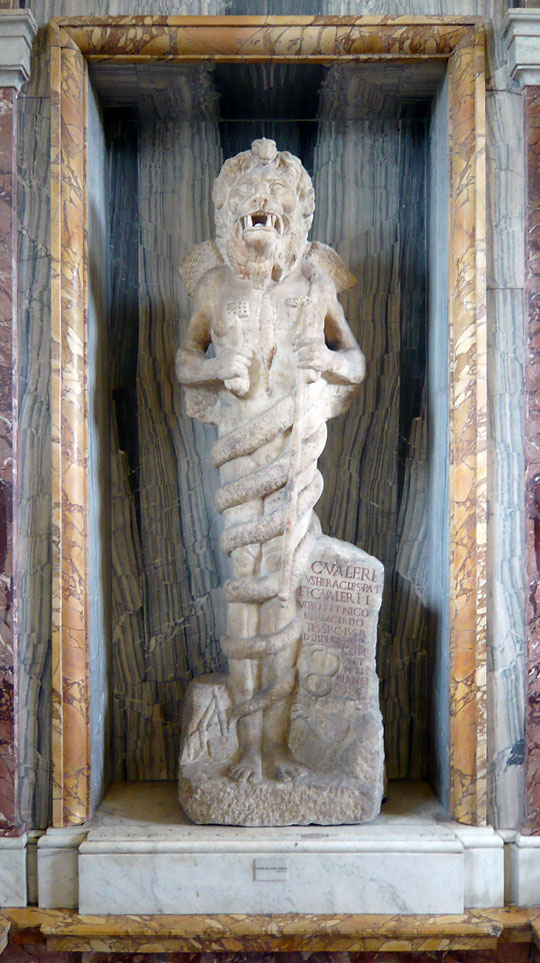
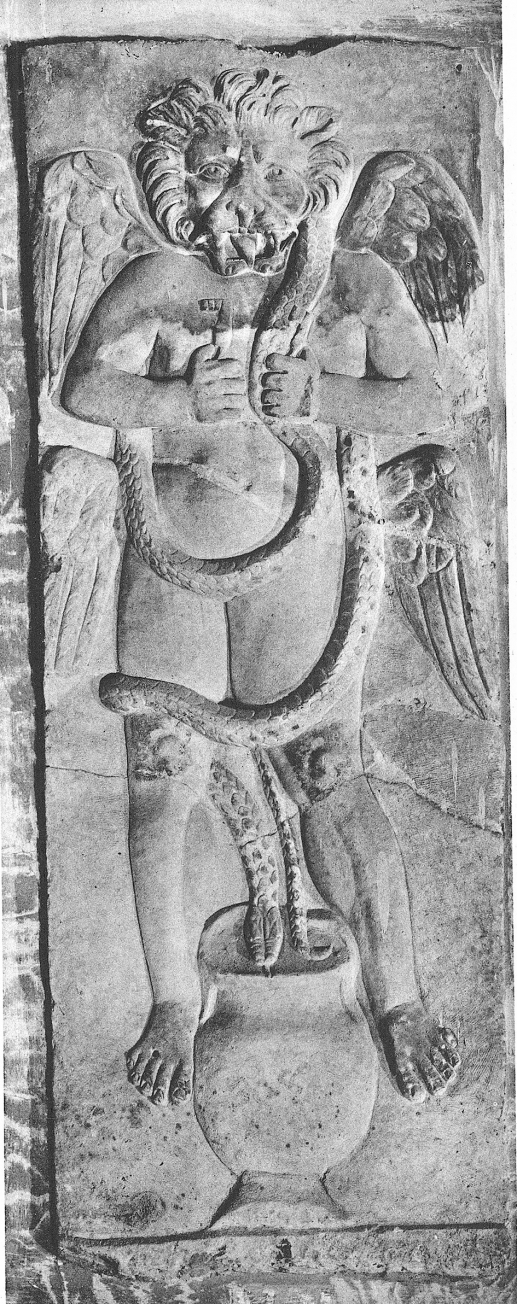
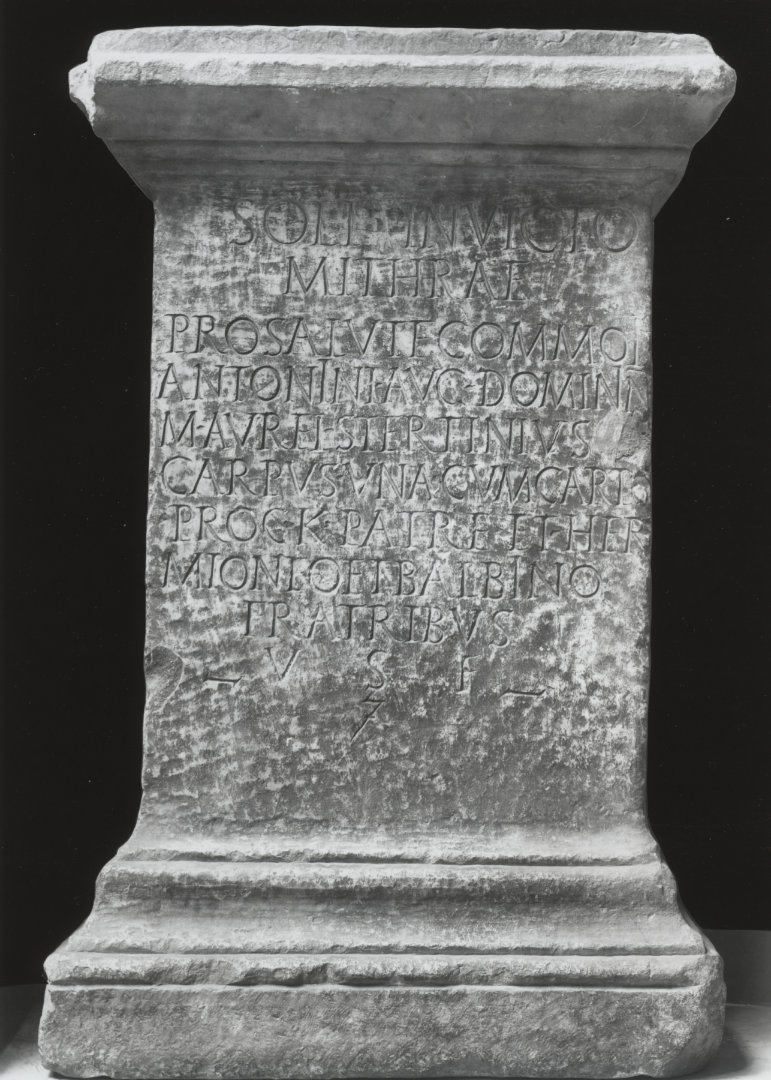
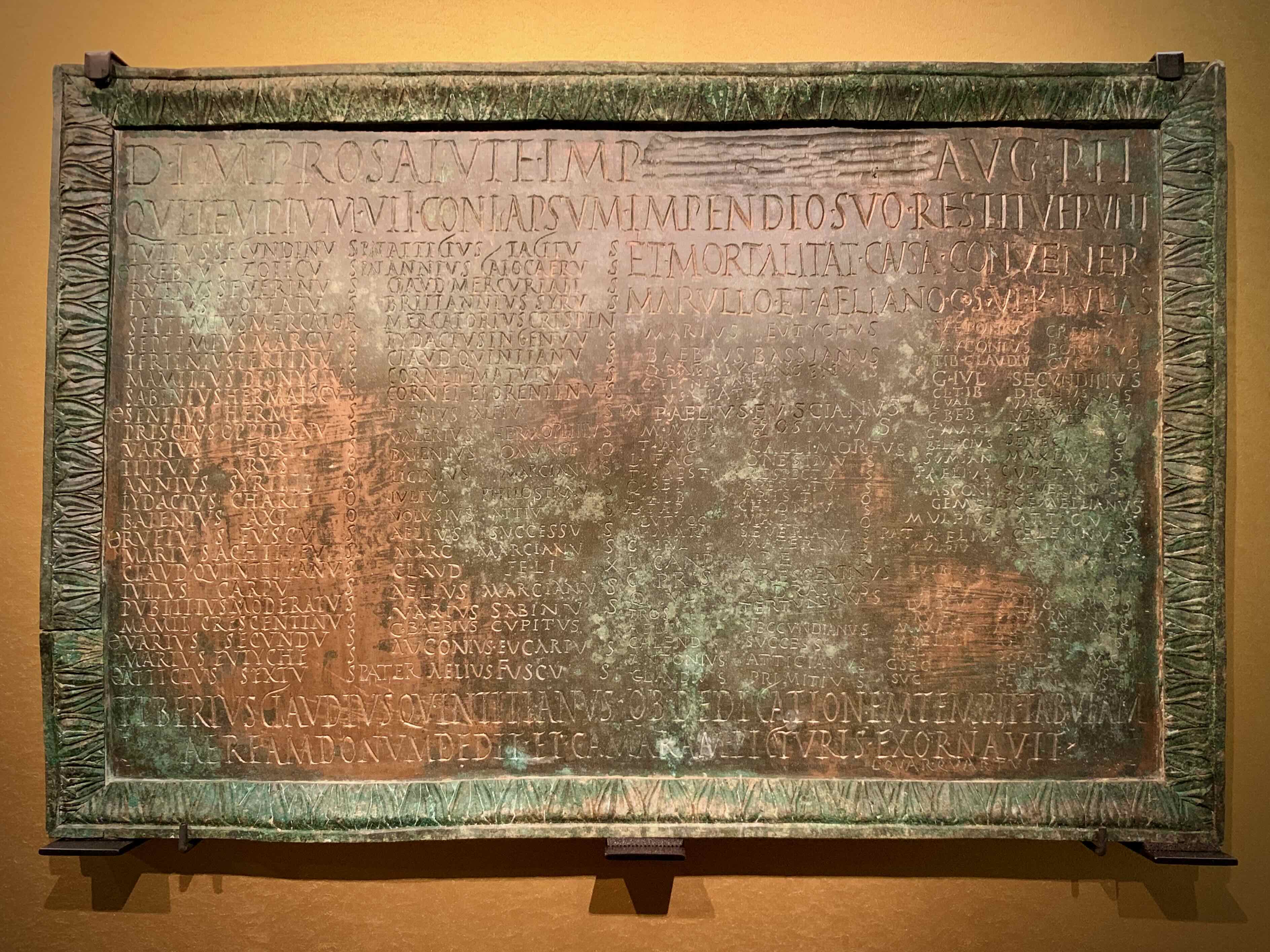
Comments
Add a comment